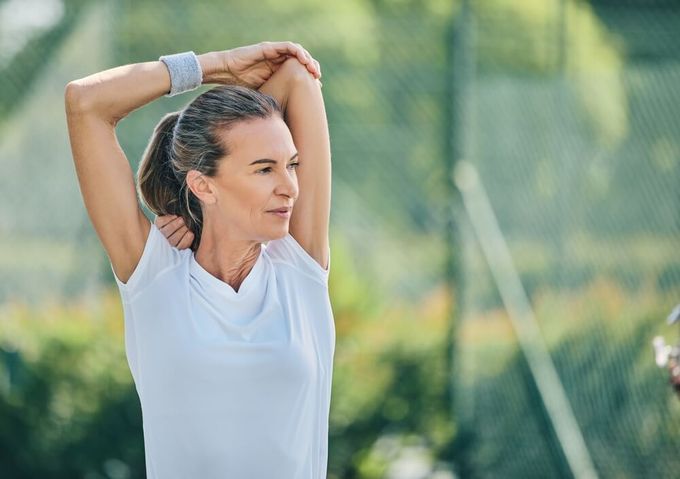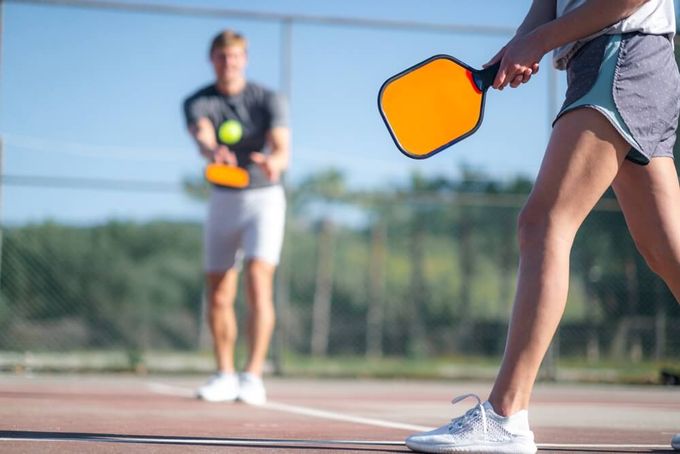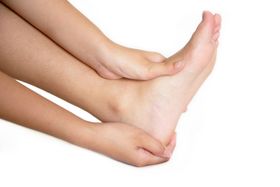Preventing Pickleball Injuries: 6 Tips to Stay Injury-Free
Get expert advice on how to prevent pickleball injuries to improve your overall athletic performance during matches.
Updated October 14, 2024.

Are you tired of nursing sore muscles and nagging injuries after a game of pickleball? If so, you're not alone. This comprehensive guide shows you exactly how to prevent strains from playing this sport.
From warm-up routines to proper equipment choices, we've got you covered with practical tips and expert advice to keep you injury-free and enjoying the game you love.
» Check out our expert tips on becoming better at pickleball
Most Common Causes of Pickleball Injuries
The elbow, shoulder, wrist, and lower back are commonly affected when playing pickleball. Since it involves a lot of sideways movements, it tends to put a strain on your hips and knees, too. There's also more jumping than tennis, which can lead to injuries to these body parts.
Note: Pickleball may cause overuse injuries like meniscus tears, especially in older players, because the game is intense and lasts for hours.
» Try these exercises to help heal your sprained ankle
6 Tips on How to Prevent Pickleball Injuries
1. Get Proper Sleep
Prioritize going to bed at a consistent time, as fatigue can lead to compromised form and increased injury risk. Additionally, avoid caffeine and electronic devices before sleeping to help promote better sleep quality.
2. Warm Up Adequately
Before engaging in a pickleball match, it's crucial to prepare your body to prevent injuries. You can try a ramp warm-up where you:
- Start with light jogging or jumping jacks to prepare your cardiovascular system for movement.
- Do dynamic stretching exercises that target the hips to mobilize your joints and ensure full range of motion. They'll improve flexibility and prevent pickleball-related injuries.
- Include potentiation exercises involving quick, explosive movements to activate your muscle fibers. It primes them for the demands of pickleball gameplay.
Note: This warm-up routine may sound extensive, but it should only take about 10 minutes.
» Explore different benefits of orthotics.
3. Incorporate Arm Care Routine
A well-designed arm care routine tailored to your specific activity and throwing mechanics can significantly enhance your performance and longevity. Strengthening arms and shoulders prevents tennis elbow and rotator cuff injuries, which are common among pickleball players due to the repetitive swings.
You can also improve stability and control in your shoulder joints and reduce the risk of injury by incorporating rotational exercises. They mimic your throwing motion to address individual muscle imbalances, helping you strike more precisely and powerfully.
4. Choose Proper Footwear
The court surface and footwear are essential factors in preventing pickleball injuries. Investing in shoes with lateral support is important, as the sport involves more than just forward and backward movements.
Similarly, using customized insoles like the ones from Upstep can provide additional support and help prevent issues like knee misalignment. They are beneficial for players with flat feet or high arches.
Treatment for Foot-Related Pickleball Injuries:
Icing the injured area can relieve inflammation and discomfort. Avoid putting weight on the foot, especially if you've sprained your ankle.
The RICE method (rest, ice, compression, elevation) is usually recommended for treating foot injuries, but doing low-level exercises will also help you heal in the long term. It helps you mobilize the affected area and activate muscles, boosting blood flow and speeding up the rehabilitation.
Note: Custom orthotics can alleviate common issues such as foot pain, including heel pain from plantar fasciitis and arch pain.
» Discover the benefits of arch supports for your feet and ankles
5. Use Stability Tape and Braces
Stability tapes—like the ones from the Luko or Kinesio brand—are applied with a specific direction of pull to cue muscle activation and rotation. They manage ligament strains and improve proprioception.
On the other hand, counterforce braces compress and support elbows and knees, alleviating stress on the joints. Including them in your gear can help you play comfortably and confidently.
6. Invest in the Right Equipment
While modifying the paddle in pickleball is less straightforward than adjusting a tennis racket, you can explore different options depending on how much stiffness you prefer. Also, you should choose comfortable clothing in which you can move freely. It helps prevent chafing or irritation, and regulates your temperature.
Less Pickleball, More Recovery: Key to Preventing Injuries
Many players have injuries, attributing them to tissue issues or weaknesses. But often, the cause lies in excessively high playing volume. They might go from being relatively inactive to playing pickleball six or seven days a week for multiple hours daily.
A practical solution is modifying play volume. Reducing the hours played daily or incorporating extra rest days can make a big difference. You can start with two or three a week and gradually increase—many players have seen improvements in their overall condition and injury recovery.
» Explore the best ways to recover from sports injuries










